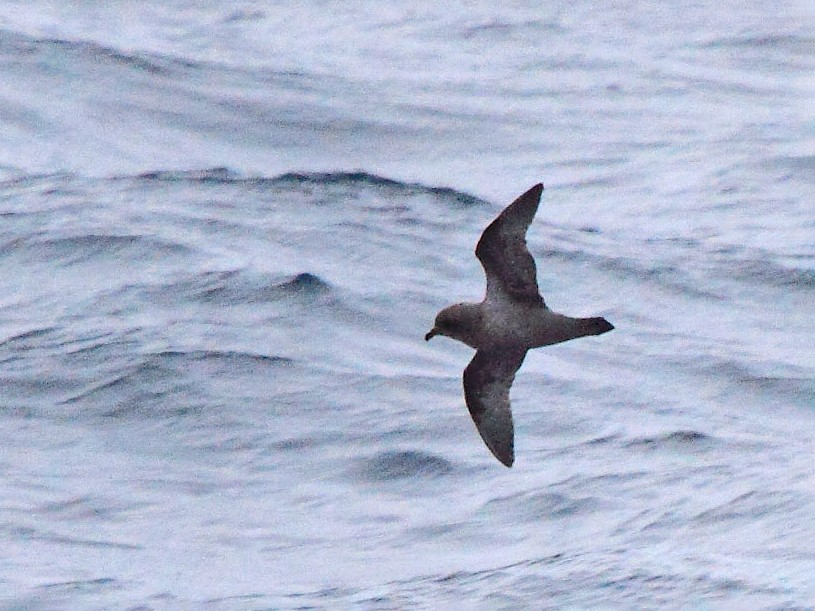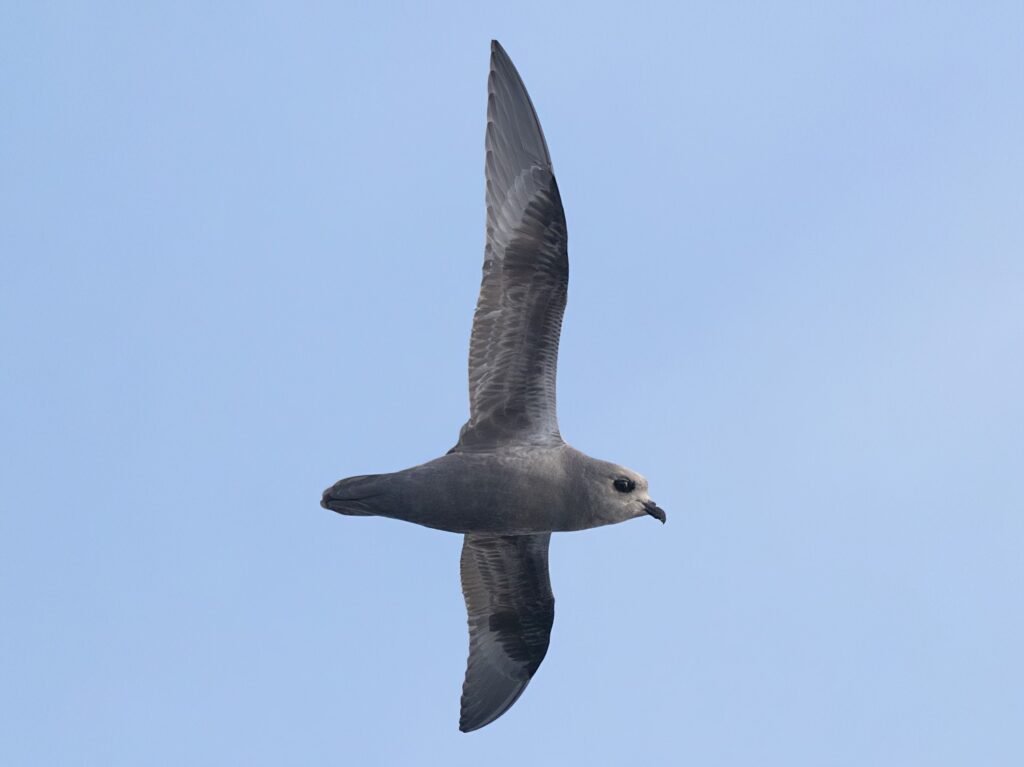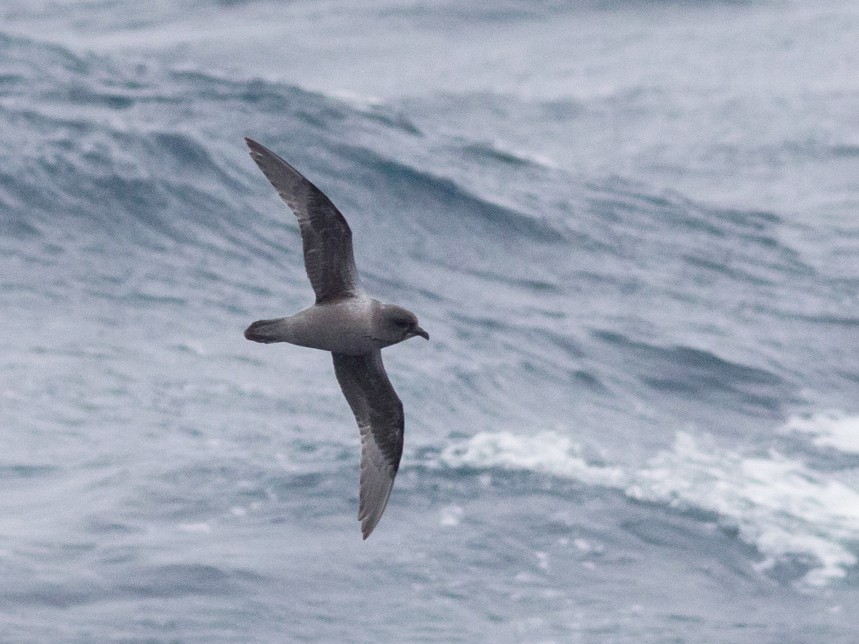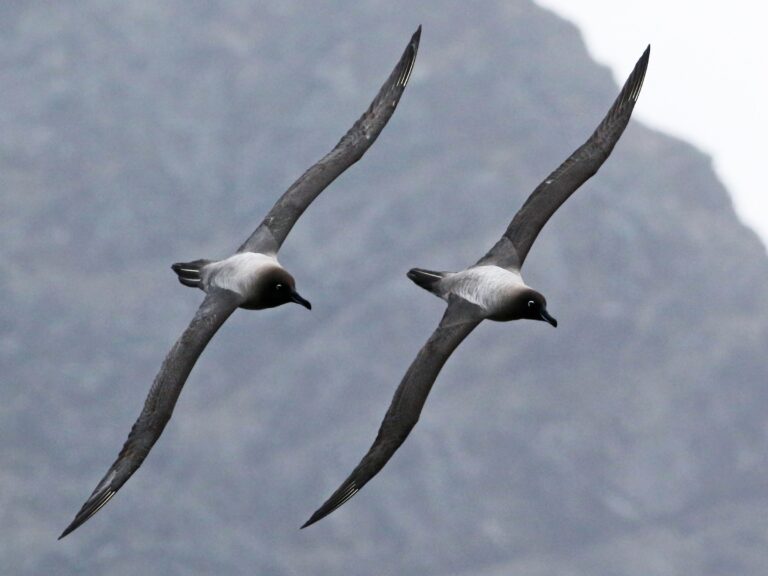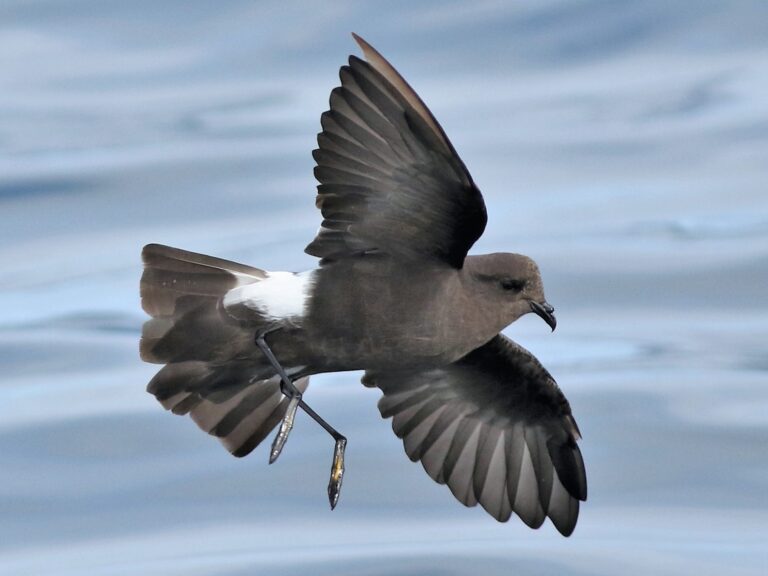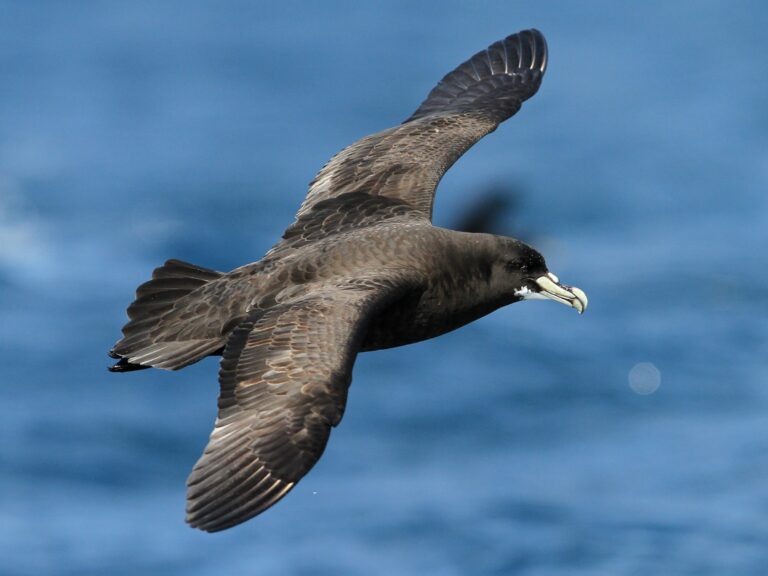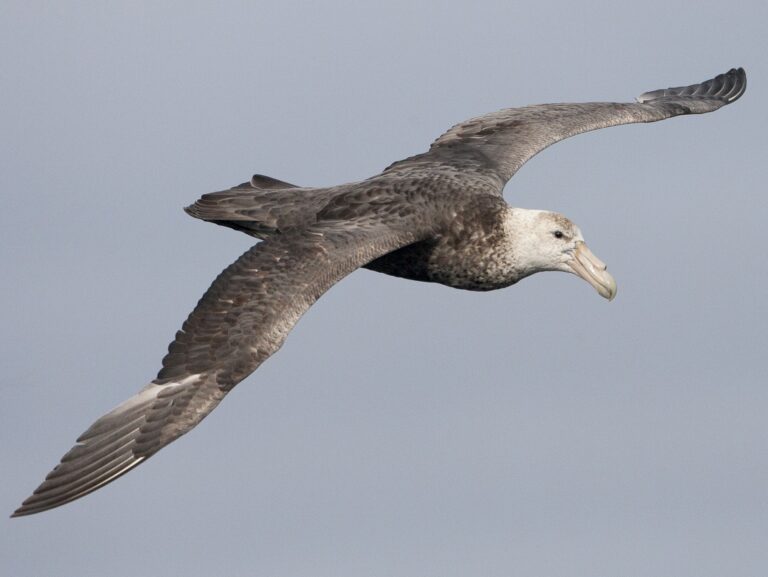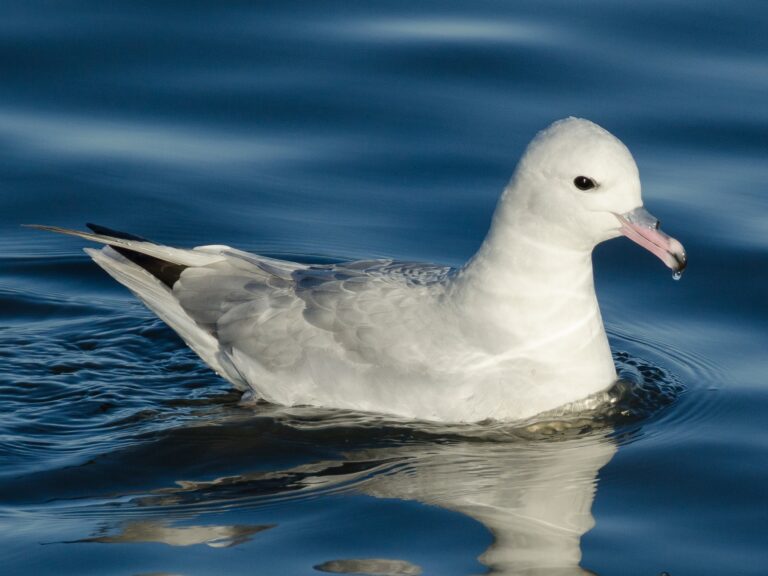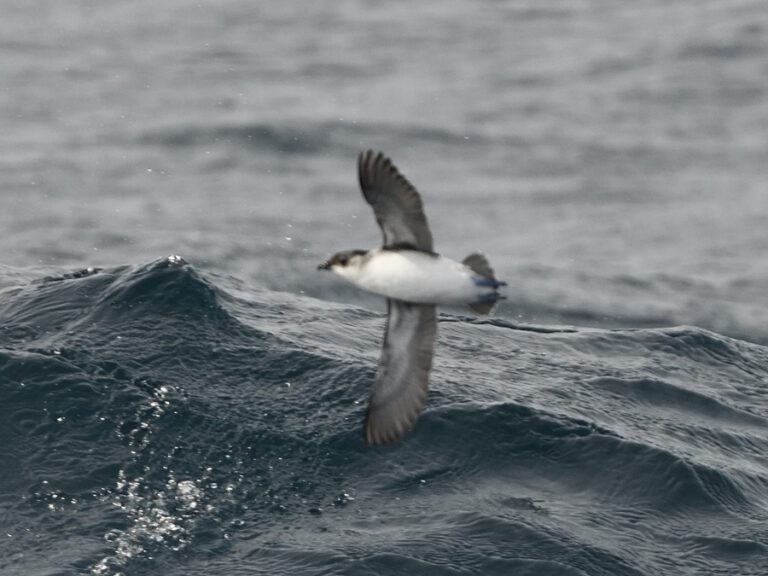Kerguelen Petrel: Unraveling the Mysteries of This Remarkable Seabird
The Kerguelen Petrel is a fascinating seabird native to the remote Kerguelen Islands in the Southern Ocean. Known for its distinctive appearance and remarkable adaptation to harsh environments, this unique species plays a crucial role in the local ecosystem through its feeding habits and breeding behavior. Its presence in this isolated region highlights the importance of conservation efforts to protect its habitat from various threats.
These petrels are part of the Procellariiformes order, a group characterized by their strong flying skills and ability to navigate vast distances over the ocean. They primarily feed on squid and fish, foraging in the nutrient-rich waters surrounding the islands. Unfortunately, due to challenges like climate change and fishing pressures, their conservation status is becoming increasingly concerning.
Understanding the Kerguelen Petrel’s biology and ecology is essential for ensuring its survival and maintaining the balance of its habitat. This article will explore various aspects of their life, revealing why this bird deserves attention and protection.
Key Takeaways
- The Kerguelen Petrel is crucial for the ecosystem of the Kerguelen Islands.
- It primarily feeds on squid and fish, showcasing its adaptability to ocean life.
- Conservation efforts are necessary to protect this species from environmental threats.
Description and Taxonomy
The Kerguelen Petrel, known scientifically as Aphrodroma brevirostris, is a pelagic bird belonging to the family Procellariidae. This section discusses its physical characteristics and taxonomic classification, highlighting its unique features and scientific lineage.
Physical Characteristics
The Kerguelen Petrel is medium-sized, with a wingspan ranging from 84 to 92 centimeters. Its plumage is primarily gray on the upper parts, with white underparts. Notable features include a short, stout bill that is adapted for their diet, which consists mainly of squid and small fish.
This petrel has a distinctive flight pattern characterized by long glides and quick flaps. Adult birds have a dark cap and a lighter face, which enhances their recognition in the wild. The juveniles display a more mottled appearance, which helps them blend into their environment as they mature.
Taxonomic Classification
The Kerguelen Petrel is classified under the order Procellariiformes and the family Procellariidae. Within this family, it belongs to the genus Aphrodroma. This taxonomic group also includes other species of petrels, which share similar ecological adaptations.
It is essential to understand its place in the ecosystem, as the Kerguelen Petrel’s population dynamics are influenced by environmental changes and human interactions. Ongoing research aims to clarify its evolutionary relationships with other gadfly petrels, revealing insights into the biodiversity within the family Procellariidae.
Habitat and Distribution
The Kerguelen Petrel is primarily found in the Southern Oceans, particularly around the Kerguelen Islands. Its habitat covers varied environments that are crucial for its survival. This section will explore the geographic range of the Kerguelen Petrel and the habitual environments it occupies.
Geographic Range
The Kerguelen Petrel’s geographic range is largely confined to subantarctic regions. They breed on the Kerguelen Islands and other nearby islands in the Southern Ocean. Their nesting sites are usually located on steep cliffs and rocky slopes, which provide safety from predators.
In non-breeding seasons, Kerguelen Petrels migrate over vast oceanic expanses. They can be seen as far as the waters surrounding the Antarctic Peninsula. Their pelagic lifestyle means they spend most of their time at sea, foraging for food over deep ocean waters.
Habitual Environments
Kerguelen Petrels inhabit diverse environments during their breeding and non-breeding seasons. On Kerguelen Island, they prefer areas with abundant vegetation, which provides nesting material and shelter. These petrels often choose locations near the coast, where they can easily access the ocean.
In the Southern Oceans, Kerguelen Petrels are adapted to living in open waters. They rely on rich marine ecosystems for their diet, primarily feeding on fish and squid. These pelagic habitats are vital for foraging and raising young. Their ability to thrive in harsh marine conditions showcases their adaptability.
Diet and Feeding Habits
The Kerguelen Petrel has a varied diet mainly consisting of marine organisms. Its food sources include fish, squid, krill, and crustaceans. Understanding its feeding habits provides insight into its ecological role and adaptations.
Typical Prey
Kerguelen Petrels primarily hunt for small fish and squid. They often feed on various species, including:
- Krill: A key component of their diet, these small crustaceans are abundant in cold waters.
- Fish: Kerguelen Petrels consume different types of fish, taking advantage of the diverse aquatic life in their habitat.
- Squid: This is another important prey, providing essential nutrients for energy and growth.
The abundance of these prey items influences their breeding success and overall population health.
Feeding Techniques
Kerguelen Petrels employ several feeding techniques. They often forage by:
- Dipping: This involves swooping close to the water’s surface to catch small marine animals.
- Surface Seizing: The birds grab prey from the surface while gliding over the water.
- Plunge Diving: Occasionally, they may dive into the water to catch fish or squid.
These techniques allow the Kerguelen Petrel to effectively exploit various food sources, demonstrating adaptability in their feeding habits. Their specialized skills help them thrive in the nutrient-rich waters around the Kerguelen Islands.
Reproduction and Breeding
Kerguelen Petrels exhibit distinct reproductive behaviors and nesting characteristics. They are known for their colonial breeding patterns, which play a significant role in their life cycle. Understanding their nesting behaviors and chick development is essential to grasping their survival and adaptation in the Kerguelen Islands.
Breeding Sites
Kerguelen Petrels breed primarily on the remote Kerguelen Islands. They prefer rocky cliffs and coastal areas for their colonies. These sites provide shelter from predators and harsh weather.
Breeding occurs mainly from late September to February. During this time, many individuals return to the same breeding sites year after year. This fidelity to location helps maintain strong social bonds within colonies.
Nesting Behaviors
Kerguelen Petrels build simple nests in crevices or burrows. They often use available vegetation and feathers to line them for insulation. The nest’s location is crucial for protecting eggs from both cold weather and predators.
The female typically lays one egg per breeding season. Both parents take turns incubating the egg for approximately 50 to 60 days. This shared responsibility is vital for maintaining warmth and ensuring successful hatching.
Chick Development
Once the egg hatches, the chick is altricial, meaning it is born in a helpless state. Initially, it is covered in gray down feathers and relies heavily on its parents for food.
Kerguelen Petrel chicks continue to grow rapidly, reaching approximately their adult size by about 10 weeks. During this time, both parents feed them a regurgitated diet of squid and fish.
After around three months, the chick fledges and leaves the nest, although it will often stay close to the breeding site for some time as it learns to find food independently.
Conservation Status
The conservation status of the Kerguelen Petrel is influenced by various threats as well as ongoing conservation efforts. Understanding these factors is crucial for the protection of this species.
Threats to Survival
The Kerguelen Petrel is classified as Least Concern by the IUCN, but it still faces threats that can impact its population. Key issues include habitat degradation caused by introduced species, such as rabbits, which damage nesting sites.
Predation by invasive species like rats and cats poses a serious risk to their eggs and young birds. Changes in ocean temperature and fish populations can also affect food availability.
Human activities, including fishing and tourism, can lead to further disturbances in their breeding habitats. Monitoring these threats is essential for effective conservation.
Conservation Efforts
Conservation efforts for the Kerguelen Petrel revolve around habitat protection and species monitoring. Authorities aim to minimize impacts from invasive species through targeted control programs.
Research is ongoing to better understand their biology and ecology, aiding in more informed conservation strategies.
Protected areas have been established to preserve critical breeding sites. Collaboration with local communities and stakeholders enhances the effectiveness of these initiatives.
The commitment to conservation in these areas reflects a broader goal of maintaining the ecological balance and ensuring the survival of the Kerguelen Petrel in the wild.
Frequently Asked Questions
This section addresses common questions about the Kerguelen Petrel, including its diet, breeding behaviors, and regions of habitation. Specific details about its migratory patterns, conservation status, and distinguishing features will also be provided.
What is the typical diet of the Kerguelen Petrel?
The Kerguelen Petrel primarily feeds on small fish, squid, and crustaceans. It uses its excellent foraging skills to catch prey near the surface of the water. The diet may vary slightly depending on seasonal availability.
In which regions is the Kerguelen Petrel predominantly found?
The Kerguelen Petrel is mainly found in the subantarctic region, particularly around the Kerguelen Islands. They prefer remote, often rugged coastal areas, where they can nest and feed without significant human disturbance.
How does the breeding behavior of Kerguelen Petrels differ from that of other petrels?
Kerguelen Petrels have a unique breeding cycle. They typically breed in colonies on steep cliffs or rocky slopes. Their courtship involves elaborate displays, and they only raise one chick per breeding season, which is typical among many petrel species.
Can you describe the migratory patterns of the Kerguelen Petrel?
Kerguelen Petrels are known for their migratory behavior, often traveling long distances. During the non-breeding season, they can be found across the southern ocean, sometimes as far as South America and New Zealand. Their migrations are determined largely by feeding opportunities.
What conservation statuses apply to the Kerguelen Petrel?
The Kerguelen Petrel is currently classified as near threatened. Conservation efforts are ongoing to monitor their populations and protect their breeding habitats, which are at risk from environmental changes and human activities.
What are the key distinguishing features of the Kerguelen Petrel compared to other petrel species?
Kerguelen Petrels are medium-sized with a distinctive dark brown plumage and a white underbelly. They also have a unique bill shape that helps them hunt for food. Compared to other petrels, their size and coloration are key identifiers.
